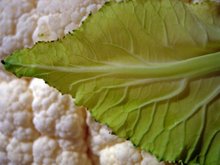 I imagine “The Pantry Forager,” an essay by Pete Wells for Food and Wine, could spark a mean Food Network reality show. Tonight: four chefs, four kitchens, four hungry families. What will they whip up with just an onion, a jar of peanut butter, a box of spaghetti, and thirteen cookbooks?
I imagine “The Pantry Forager,” an essay by Pete Wells for Food and Wine, could spark a mean Food Network reality show. Tonight: four chefs, four kitchens, four hungry families. What will they whip up with just an onion, a jar of peanut butter, a box of spaghetti, and thirteen cookbooks? Yesterday, I faced my own Mother Hubbard moment. I had three mouths to feed and nothing but two questionable chicken breasts. Rather than walk a block to Safeway (and deprive the already open beer on the counter of my company), I played Pantry Forager.
I used to think it the mark of a bad book when the reader stopped, mid-paragraph, to write something of her own or, worse, cook a meal. But page after page of Best Food Writing 2005 is mouth-watering, and I realize now that a good book should make you hungry. I am seduced by a syrup of fresh oranges and vanilla bean whisked with oil. I am tempted by a box of spaghetti and a jar of peanut butter. I am challenged by two old chicken breasts and a one-pound bag of brown salad.
One whose home is stocked with fresh oranges and vanilla beans needn’t worry much about foraging. But a few fancy staples in your home can make any cucina povera elegant. Don’t leave the grocery store without a bottle of nut (roasted hazelnut, macadamia nut, walnut) or avocado oil. Keep a small bag of unsweetened, grated coconut around. And you can’t go wrong with a spare vanilla bean.
This made-for-summer recipe was adapted from one on a low-carb forum I frequent. Original credit goes to a poster named Cristeen, whose innovative combinations have been making my family’s tongues happy for several years. Like every recipe in a cook’s repertoire, this one has been diddled and tweaked to perfection for our particular palates.
Cristeen’s (Mostly) Tropical Chicken Salad
Ingredients
2 boneless, skinless chicken breasts, boiled, torn apart, and chilled;
1 lb. bag of salad (preferably not wilted);
assorted sweeter vegetables (grape tomatoes, red peppers, spring onions), diced;
1 banana;
1/4 cup cashews (or peanuts, almonds, pecans, or walnuts—in that order of preference);
2 T coconut (optional).
Dressing
1/4 cup toasted hazelnut oil (or avocado, macadamia, walnut—olive as a last resort, don’t bother with vegetable oils);
1/2 cup white vinegar;
1/2 cup (scant) Splenda or sugar.
Instructions
This is a salad, so throw the whole shebang in a bowl. Whisk the dressing in a measuring cup, pour it over the salad, and toss gently, taking care to preserve the fragile state of the bananas, especially if they are as left over as ours. Serve immediately.
This is a filling meal appropriate even for the child who hates salad, as mine does. It’s twice as delicious with fresh ingredients as it is with old ones, but it’s still tasty, especially in summer months, when cooking can make you cranky.


